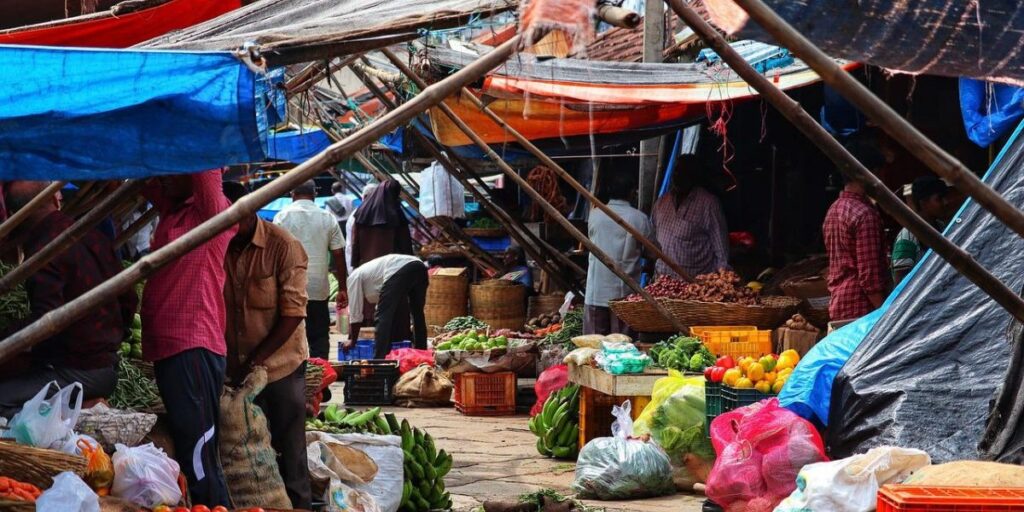Physical Address
23,24,25 & 26, 2nd Floor, Software Technology Park India, Opp: Garware Stadium,MIDC, Chikalthana, Aurangabad, Maharashtra – 431001 India
Physical Address
23,24,25 & 26, 2nd Floor, Software Technology Park India, Opp: Garware Stadium,MIDC, Chikalthana, Aurangabad, Maharashtra – 431001 India

By Aayushi Sharma
The recent increase in tomato costs has raised monthly kitchen budgets for Indian homes, and many people have even quit eating tomatoes. Tomato prices have increased in retail stores in recent weeks, and experts don’t see any signs of a price drop. Tomato prices are expensive due to a confluence of environmental, logistical, and market issues. The availability of the necessary vegetables in the market has been impacted by the nonstop rain and shortage of fresh produce. Due to the severe rains that have affected distribution and trade, tomato prices in North India have risen to Rs 200 per kg. There are other problems besides the tomato crisis. Prices are rising for a variety of other vegetables, including onions, potatoes, beans, cauliflower, cabbage, and ginger.

Why are the tomatoes’ prices soaring? : Climate change and Inflation
A statewide shortage has caused prices of tomatoes, a staple of Indian cuisine, to jump by more than 400%. The scarcity has been blamed on India’s unpredictable weather during this year’s tomato season, especially recent unseasonably heavy rainfall that destroyed the crops and sparked a fatal fungal disease. According to a study, climate change poses risks to price stability by having an upward impact on inflation, altering its seasonality and amplifying the impacts caused by extremes.
Extreme weather made worse by climate change is a secret driver of inflation that threatens to raise already high prices for everything from food and clothing to technology. Droughts, heat waves, heavy rains, and flooding all damage infrastructure, crops, and the ability of workers to stay on the job, which results in supply chain failures and a lack of workers. Low yield and production in comparison to prior years have been the result of unanticipated excessive rainfall, heat waves, and the effects of climate change. As a result, there is a mismatch in supply and demand. The farmers are most affected by this climate change impact.
Alokya Kanungo, a researcher whose work is on the impact of climate change on soil health, told CFC India that, “Climate change is anticipated to affect tomato cultivation in India, primarily due to alterations in temperature and precipitation patterns. Increasing temperatures can negatively impact pollination efficiency and result in flower and fruit loss. Additionally, droughts and heavy rainfall events can induce water stress or excessive soil moisture. Anticipated consequences include soil degradation, as well as heightened disease and pest pressures. Adaptation strategies, such as adopting resilient crop varieties and implementing enhanced water management and pest control practices, can aid in mitigating these effects.”

How is climate change affecting food security?
Global, regional, and local food security are all expected to be impacted by climate change. Food quality and access are also impacted by climate change, which can also affect food availability. For instance, decreasing agricultural output may be a result of expected temperature rises, modifications to precipitation patterns, modifications to extreme weather events, and decreases in water availability.
Delivery of food can be delayed as a result of an increase in the frequency and severity of extreme weather events, and future forecasts predict an increase in the frequency of price spikes related to extreme occurrences. Temperature rises have been linked to contamination and deterioration.
Most of our agricultural methods now rely on seeds from high-yielding varieties, which have shown to be extremely vulnerable to climatic changes. It has become increasingly important to encourage the growth of indigenous crops as the effects of climate change on agricultural production continue to grow. We can make our agriculture climate-smart, genetically diverse, and sustainable by growing these native crops. These crops have the amazing capacity to flourish in their specific climates and display resistance to common pests and illnesses.
“The effects of climate change on tomato yield include elevated temperatures, water stress, pests, changes in soil fertility, and nutrient availability. To combat this, shading techniques, efficient irrigation, integrated pest management, soil health practices, and the development of tolerant tomato varieties are essential. Diversification and minimum tilling are examples of climate-smart agricultural practices that boost yield. Integrating these strategies is essential for mitigating the effects of climate change on tomato production and assuring yield sustainability.”, said Alokya Kanungo.
References:
https://carbonimpacts.info/article/tomato-prices-soar-in-india-climate-change-fueling-inflation
https://www.researchgate.net/profile/Alokya-Kanungo
https://www.axios.com/2022/08/18/inflation-climate-change-economy-extreme-weather
https://climatechange.chicago.gov/climate-impacts/climate-impacts-agriculture-and-food-supply
Image Source: https://thewire.in/economy/india-food-inflation-monthly-budgets-poor-households